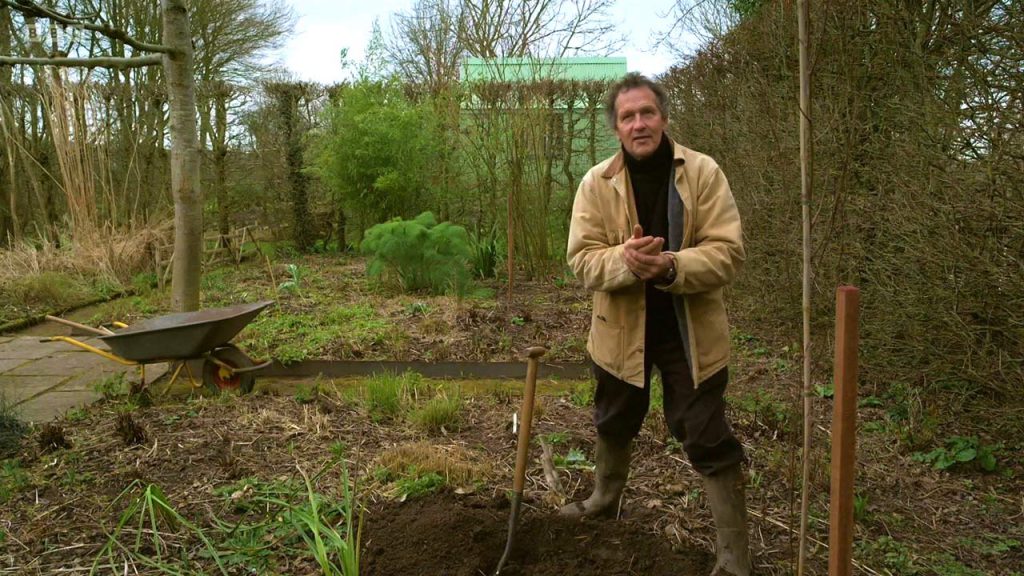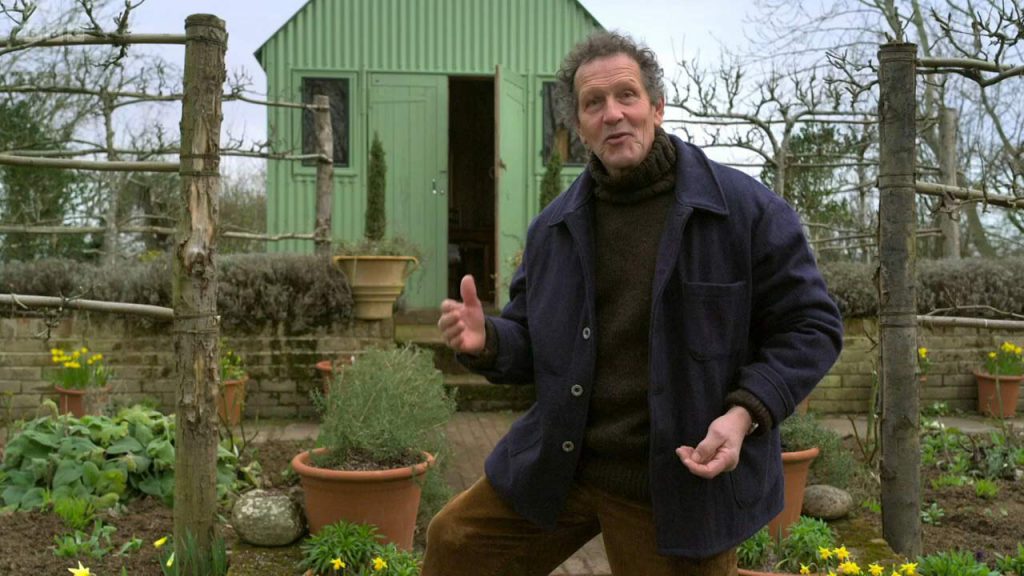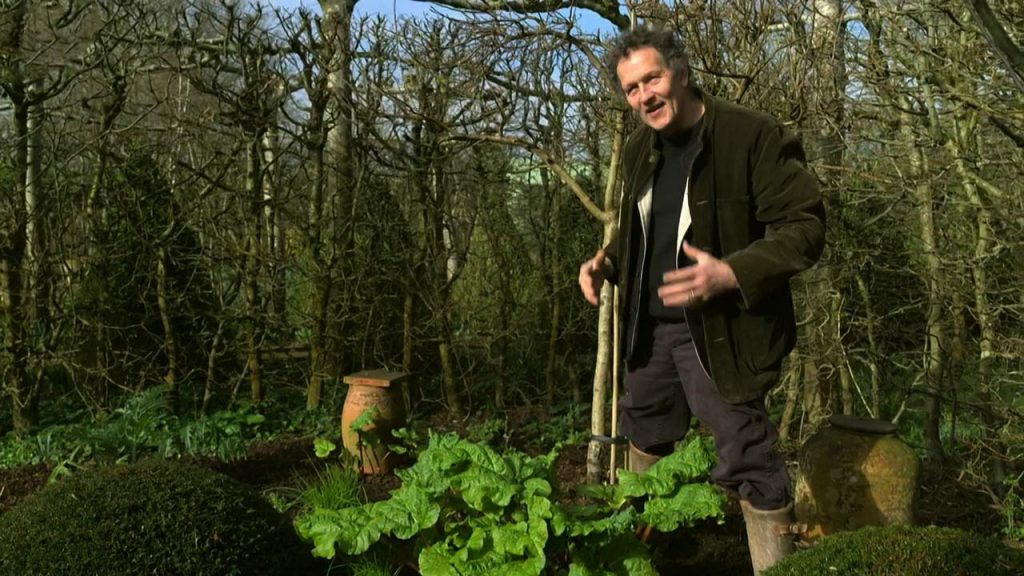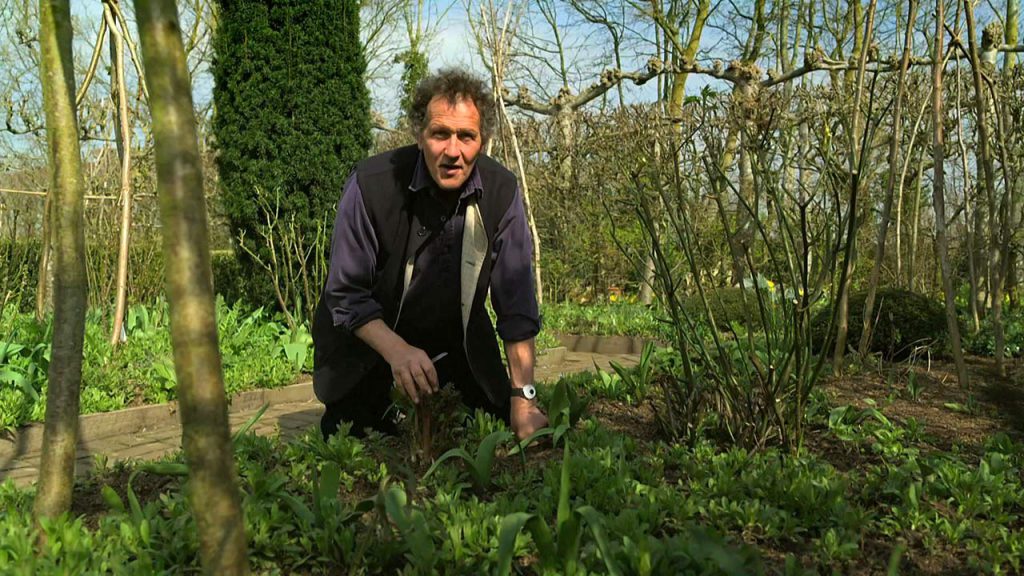Gardeners’ World 2022 episode 26: After a short break, Monty’s back at Longmeadow. With a change of seasons, he demonstrates how to prune summer-fruiting raspberries, divides perennials and plants daffodils and hyacinths in containers.
Carol Klein visits a glorious walled garden in Shropshire, where self-seeding plants have been used to great effect. The celebration of the Queen’s Green Canopy continues as JJ Chalmers heads to North Yorkshire to meet two people for whom trees have played a significant role in their lives. There’s also a couple who have created a tropical garden paradise in Lincolnshire. In south London, a gardener shares the huge array of unusual vegetables she’s been growing on her allotment, and Gardeners’ World viewers share what they’ve been getting up to in their gardens.
Across the country `Gardeners’ World’ presenters, from their own gardens and homes, give advice and share their knowledge to enable people to get the most out of their gardens. For further inspiration, professionals, horticulturists and hobby gardeners provide fellow green-fingered enthusiasts with useful tips and suggestions, no matter the size of garden or level of expertise. Whether it is creating depth in a small, backyard garden or how to make the most of the latest spinach crop with homemade pesto, presenters prove that the possibilities are endless for any gardener and garden.
Gardeners’ World 2022 episode 26
Brown rot
Brown rot is a fungal disease of apples, pears, plums, cherries and some other fruit and ornamental trees, causing a brown, spreading rot in fruit. It is caused by the same fungi that cause blossom wilt of the flowers and fruit spurs.
Brown rot is a fungal disease of tree fruit, caused by the fungi Monilinia laxa and M. fructigena. The two fungi are very closely related and indistinguishable to the naked eye. M. laxa more commonly causes blossom wilt on pears and stone fruit, and a specific form, M. laxa f. sp. mali is restricted to apples. M. fructigena can cause brown rot in most fruit trees. Many fruit trees and their ornamental varities are affected, including apples, pears, plums, cherries, nectarines, peaches and apricots.
Brown rot in the fruit, spreading out from wounds, especially those made by birds, codling moth and apple scab infection. Infection can spread between touching fruit in a cluster. Affected fruit either fall, or remain hanging on the tree in a mummified state. Buff-coloured pustules of the causal fungi on the fruit surface, often in concentric rings. Usually seen under wet conditions.
Minimise carry-over of the pathogens by removing and disposing of all brown rotted fruit promptly. To dispose of fruit, you can bury them at least 30cm (1ft) below the soil surface, or put them in the local council green waste (although check first as some councils will not accept large volumes of rotting fruit). Do not allow rotted fruit to remain on the tree. No fungicides are available to amateur gardeners for the control of brown rot.
How to grow agapanthus
These dramatic sun-loving border plants produce large spherical flowerheads, usually in beautiful shades of blue, from midsummer onwards. These sway on tall stems above clumps of strappy foliage. Some types, especially the evergreens, may not be fully hardy, so are best grown in containers that can be protected from frost over winter. Grow all agapanthus in well-drained soil in full sun. Avoid planting in shade as they won’t flower much.
Water regularly in the growing season, especially in the first year after planting. Once established they will need little watering, but some in late summer in very dry years will help ensure good flowering in the next year. Feed border plants in spring when they start to come into growth with a balanced fertiliser, such as Vitax Q4, Growmore or fish, blood and bone at the manufacturers recommended dose. For containers, use a liquid fertiliser, such as Phostrogen or seaweed feed, diluting according to the instructions on the bottle. Feed fortnightly from April until flowers begin to show colour.
Protect your potted plants in autumn by placing in a light, frost-free place, ideally sheltered from the worst of the winter rains. This might be a cool greenhouse or coldframe, but place at the bottom of a south- or west-facing wall if you don’t have one. Wrap all agapanthus (hardy and tender types) in two to three layers of horticultural fleece for protection from November to early April.




